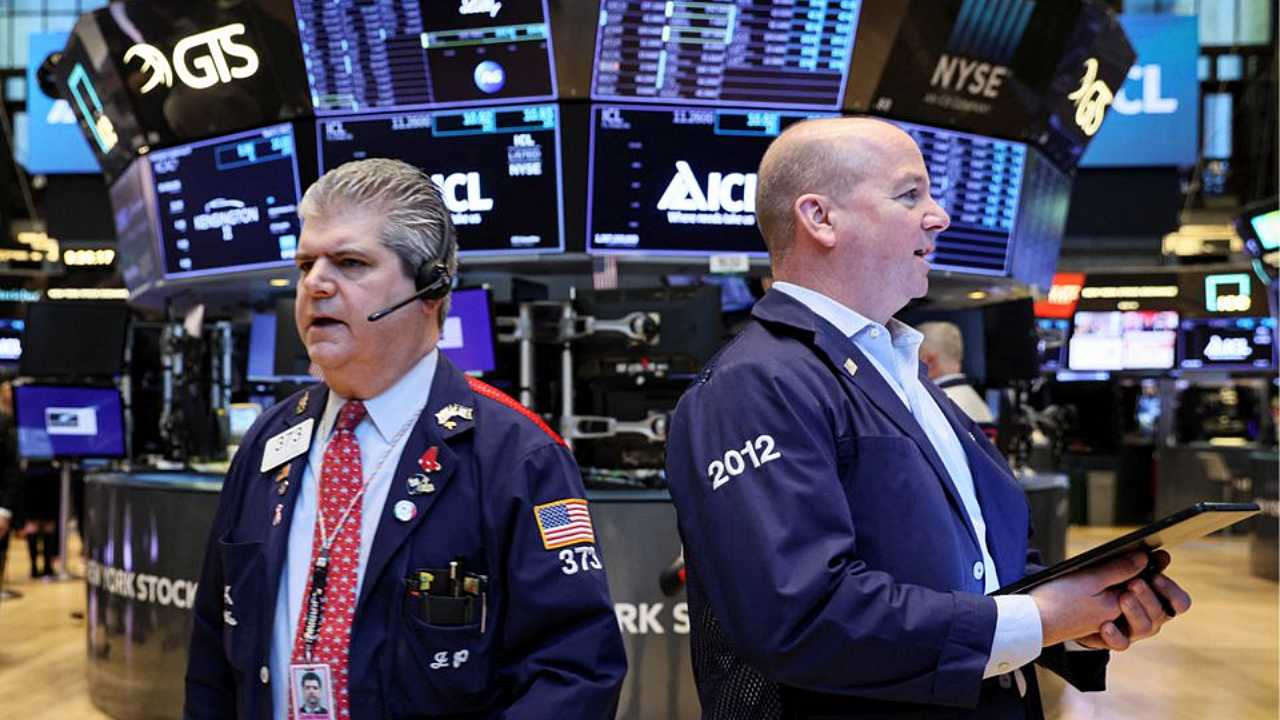In global markets, all eyes are on US data
Although the expectations that major central banks around the world will start reducing interest rates in the near future remain strong, it seems that the risk appetite in the equity markets has diminished as concerns have increased that the US Federal Reserve (Fed) will start reducing interest rates later than the central banks of other countries.
Macroeconomic data announced in the USA during the week point to a strong stance in economic activity despite the fact that the Fed has kept the policy rate at 5.25-5.50 percent, the highest level of 23 years since July 2023, as part of the fight against inflation, and Fed officials are hawkish.
Tone-on-tone directives were the main factors that created sales pressure in the share markets. 'WAIT AND SEE' MESSAGE FROM POWELL While Fed Chairman Jerome Powell's "wait-and-see" message came to the fore in his statement on Wednesday, he said, "If the economy generally continues as we expect, most FOMC members think it would be appropriate to start reducing the policy rate at some point this year." caused a decline and upward movements in commodity prices.
After Powell, Minneapolis Fed President Neel Kashkari stated on Thursday that interest rate cuts may not occur this year unless further progress is made in inflation, and the declines in stock markets attracted attention.
On the macroeconomic data side, yesterday's non-agricultural employment in the country exceeded expectations with 303 thousand people in March and the unemployment rate decreased from 3.9 percent to 3.8 percent, indicating that the tight stance in the labor market continues. Following the data in question, Richmond Fed President Thomas Barkin stated that the employment report for March indicated that the labor market was "quite strong." Fed Board Member Michelle Bowman also said she expects progress in reducing inflation to 2 percent will be slower this year.
Pointing out that reducing the policy rate too early or too quickly could result in a rise in inflation, Bowman warned that this may require further interest rate increases in the future to return inflation to 2 percent. Dallas Fed President Lorie Logan emphasized that it is too early to consider lowering interest rates, given the upside risks to inflation, and that the uncertainty about which economic path is on should be resolved. Explaining that the Fed should be ready to react appropriately if inflation stops falling, Logan said that a flexible approach to monetary policy will provide time to continue evaluating the data and make the best choices to achieve price stability and maximum employment.
Following these developments, the probability of the Fed reducing interest rates in June decreased to 49 percent in the pricing in money markets.
A week ago, this probability was priced at 64 percent. Analysts stated that the inflation data to be announced in the country next week may cause changes in the pricing in question, and stated that the Consumer Price Index (CPI) in the USA is expected to increase by 0.3 percent monthly and 3.4 percent annually in March. On the other hand, in light of these developments, a sell-off trend prevailed in the bond markets, while the US 10-year bond interest closed the week at 4.39 percent, with an increase of approximately 19 basis points.
The dollar index, which reached 105.1 last week and tested its highest level since November 2023, completed the week at 104.3 with a 0.2 percent decrease.
Powell's support for this year's potential interest rate cuts and strong expectations that the Fed may start reducing interest rates in the second half of the year supported the ounce price of gold upwards. HIGHEST WEEKLY CLOSE OF ALL TIME IN GOLD The ounce price of gold completed the week at $2,326 with a 1.5 percent gain in value, achieving the highest weekly closing of all time. While ongoing geopolitical risks and supply concerns are supporting oil prices upwards, Israeli Prime Minister Benjamin Netanyahu said at the security cabinet meeting during the week that his country will operate against Iran and its proxies and will harm those who want to harm it.
Analysts emphasized that in the event of a direct conflict between Iran and Israel, the tension in the Middle East would be escalated and this situation could push oil prices even higher.
Thus, the barrel price of Brent oil, which carried its upward trend for the 4th week in a row, completed last week at 90.6 dollars with an increase of 4.4 percent, achieving its highest weekly closing since October 2023. In addition, the Food and Agriculture Organization of the United Nations (FAO) reported that the Global Food Price Index, which fell to the lowest level in 46 months in February, increased by 1.1 percent to 118.3 points in March due to the acceleration in the prices of vegetable oils and meat and dairy products. A NEGATIVE COURSE DOMINATED THE NEW YORK STOCK EXCHANGE
The sell-off trend in the New York stock market came to the fore as the macroeconomic data announced last week in the USA pointed to strong economic activity and the possibility of the bank's interest rate cut starting to be gradually postponed from June to July, following the verbal guidance of Fed officials. According to the data announced last week in the country, the number of JOLTS job vacancies increased by 8 thousand to 8 million 756 thousand in February compared to the previous month, while ADP private sector employment increased above market expectations with 184 thousand people in March. The biggest increase in hiring has been seen since July.
The number of unemployment benefit applications in the USA increased more than expected last week, reaching 221 thousand, and reached the highest level in 2 months. While the average hourly earnings, which the Fed also carefully monitors, increased by 0.3 percent to $34.69, in line with expectations, consumer loans in the country remained below expectations with an increase of $14.1 billion in February.
The foreign trade deficit of the USA increased by 1.9 percent on a monthly basis in February, reaching 68.9 billion dollars. The foreign trade deficit, which reached its highest level since April last year, was expected to be 66.9 billion dollars.
While the Institute of Supply Management (ISM) service sector Purchasing Managers Index (PMI) decreased by 1.2 points on a monthly basis to 51.4 in March, falling below market expectations, the service sector PMI data announced by S&P Global decreased by 0.6 points in the same period. It decreased to 51.7.
With these developments, the Nasdaq index in the New York Stock Exchange ended the week with a loss of 0.80 percent, the S&P 500 index with a loss of 0.95 percent and the Dow Jones index with a loss of 2.27 percent. In the week starting April 8, inflation and budget balance data as well as minutes of the Fed's last meeting will be followed in the country on Wednesday, Producer Price Index (PPI) and weekly unemployment benefit applications on Thursday, and University of Michigan consumer confidence index data will be followed on Friday.
























![[ℕ𝕖𝕧𝕖𝕣] 𝕊𝕖𝕝𝕝 𝕐𝕠𝕦𝕣 𝔹𝕚𝕥𝕔𝕠𝕚𝕟 - I Think I Have Crypto PTSD](https://cdn.bulbapp.io/frontend/images/819e7cdb-b6d8-4508-8a8d-7f1106719ecd/1)






